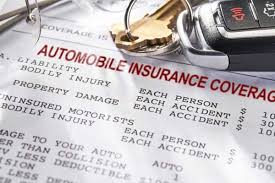Insurance can often feel like a complicated world filled with jargon and technical terms that may leave consumers confused. One crucial aspect of car insurance that everyone should understand is liability limits, specifically the term “100/300.” In this comprehensive guide, we will dive into the insurance 100/300 meaning, breaking down what these numbers represent, why they are important, and how they affect your coverage.
What Are Insurance Limits?
Definition of Insurance Limits
Insurance limits are the maximum amounts that an insurance company will pay out for claims covered by your policy. These limits are typically expressed in two forms: per person and per accident. Understanding these limits is crucial for determining how much financial protection you have in the event of an accident.
Importance of Understanding Insurance Limits
Being aware of your insurance limits is essential for several reasons:
- Financial Protection: Your insurance limits determine how much your insurance company will pay in the event of an accident. If your limits are too low, you may end up having to pay out-of-pocket for damages that exceed your coverage.
- Legal Requirements: Many states have minimum insurance requirements. Understanding your limits helps ensure you meet these legal obligations.
- Peace of Mind: Knowing you have adequate coverage can provide peace of mind while driving, allowing you to focus on the road instead of worrying about potential accidents.
What Does 100/300 Insurance Mean?
Explaining the Numbers
The term 100/300 refers to specific liability coverage limits within an auto insurance policy. Here’s how to break it down:
- $100,000 per Person: This is the maximum amount your insurance company will pay for bodily injury to a single individual in an accident where you are at fault.
- $300,000 per Accident: This is the maximum amount your insurance company will pay for bodily injury to multiple individuals involved in the same accident.
For instance, if you were to cause an accident that injures three people, your insurance would cover up to $100,000 for each person, totaling a maximum of $300,000 for the entire incident.
Liability Coverage Overview
Bodily injury liability coverage is designed to pay for the medical expenses and lost wages of individuals injured in an accident you caused. This coverage helps protect your financial assets in the event of a lawsuit and covers costs related to:
- Medical treatment
- Rehabilitation
- Lost wages
- Pain and suffering
Why These Numbers Matter
Having sufficient liability coverage is crucial because, in the event of a serious accident, medical costs can quickly escalate. For example, a single hospital visit could cost tens of thousands of dollars, and if you do not have enough coverage, you may be personally responsible for the remaining balance.
How 100/300 Liability Coverage Works
Example Scenario 1: Two People Injured in an Accident
Let’s consider an accident where two people are injured:
- Person A incurs $80,000 in medical expenses.
- Person B incurs $120,000 in medical expenses.
In this scenario, your 100/300 liability coverage would cover:
- Person A: $80,000 (fully covered)
- Person B: $100,000 (fully covered, leaving a remaining $20,000 unpaid)
You would still be liable for the additional $20,000 that exceeds the $100,000 limit for Person B.
Example Scenario 2: One Person with High Medical Bills
In another scenario, suppose only one individual is injured in an accident you caused, and their medical bills amount to $350,000. Here’s how your 100/300 coverage would apply:
- You would pay $100,000 for that individual’s injuries (the limit for one person).
- You would be personally responsible for the remaining $250,000 in medical expenses.
Coverage Beyond 100/300: What Happens if Damages Exceed Limits?
If damages exceed your policy limits, you may face significant financial liability. In the example above, if the total cost of the accident is $350,000, you would need to cover the difference, which could lead to wage garnishment or depletion of your savings. This is why it’s important to carefully consider your coverage limits.
Is 100/300 Liability Coverage Enough?
Evaluating Coverage Based on Personal Risk
Determining whether 100/300 liability coverage is sufficient for you depends on various factors:
- Net Worth: If you have significant assets (homes, savings), you may want to consider higher limits to protect these assets.
- Location: Some areas have higher medical costs and accident rates, which can increase the likelihood of exceeding your coverage limits.
- Driving Habits: Frequent long-distance travel or commuting in busy areas could elevate your risk of accidents.
State Minimums vs. Recommended Coverage
Many states have minimum required liability limits, which can be much lower than 100/300. While meeting the minimums may fulfill legal obligations, it often does not provide adequate protection. Experts generally recommend having higher limits to ensure you are better protected against potential financial losses.
Optional Higher Coverage Levels (250/500, Umbrella Policies)
For those looking for additional protection, higher liability limits, such as 250/500, may be worth considering. Additionally, umbrella policies provide extra liability coverage beyond your auto insurance limits, offering additional peace of mind for those with significant assets.
How to Choose the Right Liability Limits
Factors to Consider When Choosing Coverage
When deciding on your liability limits, consider the following factors:
- Income: If you have a stable income, you might want higher limits to protect against potential loss in the event of a lawsuit.
- Assets: If you own a home or other valuable assets, you’ll want to safeguard these against claims.
- Lifestyle: Your driving habits and patterns can also influence your risk level. More time on the road often means a higher likelihood of an accident.
Working with an Insurance Agent
Insurance agents can provide invaluable assistance in helping you choose the right liability coverage for your unique situation. They can help you analyze your risk factors and suggest coverage that aligns with your needs and budget.
Comparing Insurance Companies
Shopping around for quotes is essential. Different insurance companies may offer varying rates and coverage options for 100/300 insurance. Be sure to compare not only the premium costs but also the reputation of the insurance company, customer service ratings, and claims processing.
Common Misconceptions About 100/300 Insurance
Myth 1: “100/300 Covers All Medical Bills”
One common misconception is that 100/300 coverage applies to all medical expenses, including those incurred by you and your passengers. However, liability coverage only applies to the other parties involved in the accident for which you are at fault.
Myth 2: “100/300 is Overkill for Average Drivers”
While it may seem excessive, the reality is that accidents can result in high medical expenses, especially with today’s rising healthcare costs. Opting for a higher limit protects you from unexpected financial burdens.
Myth 3: “I’ll Never Have an Accident That Exceeds My Limits”
Many drivers underestimate their risk. Accidents happen unexpectedly, and medical bills can quickly accumulate, potentially exceeding your limits.
Pros and Cons of 100/300 Coverage
Pros of 100/300 Insurance
- Strong Liability Protection: This level of coverage offers a solid safety net in the event of an accident involving multiple parties.
- Peace of Mind: Knowing you have adequate coverage allows you to drive with confidence, knowing you are protected from significant financial loss.
Cons of 100/300 Insurance
- Higher Premiums: The more coverage you have, the higher your insurance premium may be, which could strain your budget.
- Potential Need for Higher Coverage: Depending on your assets and risk profile, you may find that even 100/300 is not enough.
Conclusion
Understanding the insurance 100/300 meaning is essential for every driver. It empowers you to make informed decisions regarding your liability coverage, ensuring you are adequately protected in the event of an accident. By evaluating your personal situation, comparing coverage options, and consulting with professionals, you can select the insurance limits that best meet your needs. Ultimately, investing in adequate liability coverage today can safeguard your financial future tomorrow.



